1. Executive Summary
1.1. Customer and Market Analysis:
1.1.1. Ticket holders: better seats (buyer); cash/food/beverage (seller)
1.1.2. Venue owners: increase sales of tickets as must have ticket and be at event to bid/sell. Increase % of concessions.
1.1.3. Concessions: increased sales when discounts offered on food/beverage used to barter. Sponsors as well from vendors.
1.1.4. Tenants: profit from increased sales in tickets, concessions, attendance
1.1.5. 3rd party ticket vendors: % of sales price when their app used to transfer tix. Double profit if their app used for original sale.
1.2. Service Offer Definition
1.2.1. Concept: once event begins, ticket holders can use app to bid for better seat or give up their seat for best offer. Live competitive bidding.
1.2.2. Bid tactics include:
1.2.2.1. Food and beverage and other onsite goods: price of which deducted from buyer's acct when seller collects from concession
1.2.2.1.1. Partner with endless other offsite. Gift cards...
1.2.2.1.2. Concession scans app or user has card linked to acct.
1.2.2.2. Credit for ticket to other event through ticket vendor
1.2.2.3. Money(no cash, electronic only)
1.2.2.3.1. PayPal
1.2.2.3.2. Seatzkie card for concession POS
1.2.2.3.3. Other funding app partner
1.3. Sales Execution Plan
1.3.1. Tbd
1.4. Go-To-Market Strategy
1.4.1. Target stakeholders. Lead with tenants, venues, concessions. Vendors will have to follow.
2. Plan
2.1. Offer Definition
2.1.1. Service Offer
2.1.1.1. What are we selling?
2.1.1.2. Product Definition
2.1.1.3. Pricing
2.1.1.4. Packaging
2.1.1.5. Positioning
2.1.2. Value Proposition
2.1.2.1. What is the Value Proposition to the Customer?
2.1.2.2. What pain are we solving?
2.2. Market analysis
2.2.1. Average 3rd party ticket sales
2.2.2. Average venue ticket sales. Vs unsold seats
2.2.3. Average concession sales:
2.2.3.1. Food
2.2.3.2. Beverage
2.2.3.3. Apparel
2.2.4. Average ticket holder using season ticket, gift ticket, company seats
2.3. Financial Analysis
2.3.1. Revenue Forecasts
2.3.1.1. Revenue and P&L Forecast (5 Years)
2.3.1.2. Revenue should be split out quarterly
2.3.2. Cost Analysis
2.3.2.1. Should include a description of the costs in entering this business and profitability analysis
2.3.3. Profitability Analysis
2.3.3.1. P&L for the offer to include gross margin, net income and break even analysis.
2.4. Sales Execution Plan
2.4.1. Sales Strategy
2.4.1.1. Direct Sales Strategy
2.4.1.2. Inside Sales Strategy
2.4.1.3. Channel Sales Strategy
2.4.2. Partner Strategy
2.4.2.1. Channel Strategy
2.4.2.1.1. What 3rd party channels should we consider for reselling this service?
2.4.2.2. Technology Partnerships
2.4.2.2.1. What technology vendors (if any) do we need to work with to execute on this plan?
2.4.2.3. Solutions Partners
2.5. Go-To-Market Strategy
2.5.1. Positioning & Messaging
2.5.1.1. What is the key messaging and positioning for the service offer? (Pain, alternatives, solution)
2.5.1.2. How do we communicate internally?
2.5.1.3. How do we communicate externally?
2.5.2. Promotion Strategy
2.5.2.1. Marketing Programs (Installed base versus new prospects)
2.5.2.2. Advertising (Publications, etc.)
2.5.2.3. Analyst Relations (Target Analysts)
2.5.2.4. Public Relations
2.5.2.5. Events (Trade shows, SEO/SEA, Seminars)
2.5.2.6. Webinars
2.5.3. Demand Generation & Lead Qualification
2.5.3.1. How do we generate and qualify new leads for the target offer?
2.5.3.2. Prospect Lists
2.5.3.3. Key Questions to Ask
2.5.3.4. Sales Collateral
2.5.3.5. Presentations
2.5.3.6. Data Sheets
2.5.3.7. White Papers
2.5.3.8. ROI Tools
2.5.3.9. Other Sales Tools (web site, etc.)
2.6. Measure and Improve
2.6.1. Numbers, budget, waterfall, break-even (cost>leads>trials>deals)
2.6.2. Sales Programs
2.6.3. Accelerated Learning Strategy, Controls, Metrics
2.6.4. Include feedback loops
2.6.5. Include financial metrics (definition of success)
2.6.6. Pipeline reports, etc…
2.7. Other Considerations
2.7.1. M&A?
2.7.2. Risk Analysis & Mitigation
3. Introduction
3.1. Purpose: structured competitive bidding for seats at events, after event has started. Open only to current ticket holders.
3.2. Stakeholders: venue management, concessions, tenants (team, performer), ticket vendors
3.3. Project Team: Brian Maloney, TBD
3.4. Related Documents
3.5. Author(s)
3.6. Sign-Off List
3.6.1. Training
3.6.2. Channels
3.6.3. International
3.6.4. Public Sector
3.6.5. Sales
3.6.6. Marketing Communications
3.6.7. Product Management
